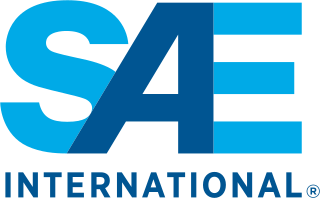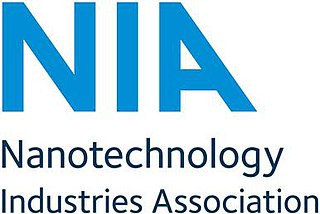History
NAMUR was established on 3 November 1949 in Leverkusen. The founding fathers were renowned experts in the chemical industry working for Bayer, BASF, Hüls and others. Established as the Association for Standardization of Measurement and Control Engineering in the Chemical Industry, the original full name of the association was the "Normenarbeitsgemeinschaft für Mess- und Regeltechnik in der chemischen Industrie", hence the acronym NAMUR. However, the original full name is no longer used today. Among others, involvement took place in the development of standards related to the 4–20 mA current loop, NAMUR sensors (e.g., IEC 60947-5-6]), NAMUR solenoid mounting plates (VDI/VDE 3845, ISO 5211), and Profibus. The exchange of experience about the equipment used in the member companies has been an important aspect of the association's activities from the very beginning.
Membership in NAMUR was originally restricted to companies in the chemical, pharmaceutical and petrochemical industries. In 2003, membership was extended to all companies in the process industries including engineering companies, service providers and legal entities which are mainly active in the technical and scientific scope of NAMUR. However, equipment supplier companies are not allowed to be a member of NAMUR in order to avoid conflicts of interest. NAMUR grants company membership, only. A personal membership is not possible.
Organization
NAMUR has more than 160 member companies from 10 countries.
The association's executive bodies are the Annual General Meeting, the Board of Management and the NAMUR Office.
Technical work within NAMUR is conducted in almost 40 working groups. The working groups draft and maintain NAMUR recommendations and worksheets and express NAMUR's opinion on current issues within the automation engineering community. Working groups are organized in four work areas
- Work area 1 "Project Planning and Construction"
- Work area 2 "Automation Systems for Processes and Plants
- Work area 3 "Electrical and Instrumentation Technology
- Work area 4 "Operation support and maintenance".
Activities in China, initiated by 2008, led to the foundation of local working groups with focus on regionally specific topics. They are coordinated by the a Chinese NAMUR office.
NAMUR has a broad international network in the European and American regions. There are various cooperation agreements with associations at national and international level.
NAMUR organizes an annual General Meeting for its member companies and invited guests with approximately 650 participants. In the course of the event, NAMUR awards are also granted for outstanding final theses in the field of automation technology and digitization in the process industry.

The World Wide Web Consortium (W3C) is the main international standards organization for the World Wide Web. Founded in 1994 and led by Tim Berners-Lee, the consortium is made up of member organizations that maintain full-time staff working together in the development of standards for the World Wide Web. As of 5 March 2023, W3C had 462 members. W3C also engages in education and outreach, develops software and serves as an open forum for discussion about the Web.

SAE International is a global professional association and standards organization based in Warrendale, Pennsylvania, United States. Formerly the Society of Automotive Engineers, the organization adopted its current name in 2006 to reflect both its international membership and the increased scope of its activities beyond automotive engineering and the automotive industry to include aerospace and other transport industries, as well as commercial vehicles including autonomous vehicles such as self-driving cars, trucks, surface vessels, drones, and related technologies.
A standards organization, standards body, standards developing organization (SDO), or standards setting organization (SSO) is an organization whose primary function is developing, coordinating, promulgating, revising, amending, reissuing, interpreting, or otherwise contributing to the usefulness of technical standards to those who employ them. Such an organization works to create uniformity across producers, consumers, government agencies, and other relevant parties regarding terminology, product specifications, protocols, and more. Its goals could include ensuring that Company A's external hard drive works on Company B's computer, an individual's blood pressure measures the same with Company C's sphygmomanometer as it does with Company D's, or that all shirts that should not be ironed have the same icon on the label.
A fieldbus is a member of a family of industrial digital communication networks used for real-time distributed control. Fieldbus profiles are standardized by the International Electrotechnical Commission (IEC) as IEC 61784/61158.

The International Society of Automation (ISA), formerly known as The Instrumentation, Systems, and Automation Society, is a non-profit technical society for engineers, technicians, businesspeople, educators and students, who work, study or are interested in automation and pursuits related to it, such as instrumentation. It was originally known as the Instrument Society of America. The society is more commonly known by its acronym, ISA, and the society's scope now includes many technical and engineering disciplines. ISA is one of the foremost professional organizations in the world for setting standards and educating industry professionals in automation. Instrumentation and automation are some of the key technologies involved in nearly all industrialized manufacturing. Modern industrial manufacturing is a complex interaction of numerous systems. Instrumentation provides regulation for these complex systems using many different measurement and control devices. Automation provides the programmable devices that permit greater flexibility in the operation of these complex manufacturing systems.
The VDE e. V. is a German technical-scientific association. VDE is best known for creating and maintaining standards in the field of electric safety and has a strong influence on the DIN.
The Institute of Electrical and Electronics Engineers Standards Association is an operating unit within IEEE that develops global standards in a broad range of industries, including: power and energy, artificial intelligence systems, internet of things, consumer technology and consumer electronics, biomedical and health care, learning technology, information technology and robotics, telecommunication, automotive, transportation, home automation, nanotechnology, information assurance, emerging technologies, and many more.

The Gubkin Russian State University of Oil and Gas is a public university in Moscow, Russia. The university was founded in 1930 and is named after the geologist Ivan Gubkin. The university is colloquially known as Kerosinka, meaning 'kerosene stove'.
ASCAMM Foundation is a Technology Center located near Barcelona, at the Vallès Technology Park. the origin of this Foundation was the Catalan Association of Enterprises Mould-Makers and Die-Makers, in Catalan: Associació Catalana d'Empreses constructores de Motlles i Matrius.
The Automotive Industry Action Group (AIAG) is a not-for-profit association founded in 1982 and based in Southfield, Michigan. It was originally created to develop recommendations and a framework for the improvement of quality in the North American automotive industry. The association's areas of interest have expanded to include product quality standards, bar code and RFID standards, materials management, EDI, returnable containers and packaging systems, and regulatory and customs issues.
WirelessHART within telecommunications and computing, is a wireless sensor networking technology. It is based on the Highway Addressable Remote Transducer Protocol (HART). Developed as a multi-vendor, interoperable wireless standard, WirelessHART was defined for the requirements of process field device networks.
Association for Standardization of Automation and Measuring Systems or ASAM is an incorporated association under German law. Its members are primarily international car manufacturers, suppliers and engineering service providers from the automotive industry. The association coordinates the development of technical standards, which are developed by working groups composed of experts from its member companies. ASAM pursues the vision that the tools of a development process chain can be freely interconnected and allow a seamless exchange of data. The standards define protocols, data models, file formats and application programming interfaces (APIs) for the use in the development and testing of automotive electronic control units. A large amount of popular tools in the areas of simulation, measurement, calibration and test automation are compliant to ASAM standards. Compliance shall guarantee interoperability of tools from different vendors, allow data exchange without the need for converters, and facilitate the exchange of unambiguous specification between customers and suppliers.

The International Institute of Refrigeration (IIR), is an independent intergovernmental science and technology-based organization which promotes knowledge of refrigeration and associated technologies and applications on a global scale that improve quality of life in a cost-effective and environmentally sustainable manner, including:
CISC Semiconductor GmbH defines itself as “design and consulting service company for industries developing embedded microelectronic systems with extremely short Time-To-Market cycles.” The company started in 1999, working in the semiconductor industry, but soon expanded its field towards the automotive branch and further extended business towards the radio frequency technology (RFID) sector in 2003. Since then, CISC gained significant experience and expertise in RFID, developing an own business segment and highly sensitive measurement equipment to test and verify RFID systems for different industries. Representatives of CISC Semiconductor are actively working on and contributing to worldwide standardization of future technologies like RFID, in different standardization organizations. This effort brings CISC into the position of being a leader in research and development, and thus being able to be “one step ahead of innovation”. As of 2011 CISC Semiconductor is in a globally leading standardization position for RFID testing by providing the convener of ISO/IEC JTC1 WG4/SG6 on “RFID performance and conformance test methods“, as well as GS1 EPCglobal co-chairs for performance and conformance tests.
The North East of England Process Industry Cluster (NEPIC) is an economic cluster developed in accordance with Michael Porter's theories and strategies regarding industrial clusters. The chemistry-using sectors in North East England, where more than 1,400 businesses are headquartered in the industry's supply chain, formed this Process Industry Cluster. In the north-east of England, the industry employs approximately 35,000 direct workers and around 190,000 indirect workers, who collectively account for more than one-third of the area's industrial economy. Companies in the cluster produce 35% of the pharmaceuticals and 50% of the petrochemicals used in the UK, making this area the only net exporter of goods from the country. The area has more than £13 billion in exports.

The Nanotechnology Industries Association (NIA) is the sector-independent expert, membership and advocacy organisation providing a responsible voice for the industrial nanotechnologies supply chains. The NIA works with regulators and stakeholders on the national, European and international levels so as to secure a supportive environment for the continuing advancement and establishment of nanotechnologies.

Eurovent is Europe's Industry Association for Indoor Climate (HVAC), Process Cooling, and Food Cold Chain Technologies. Its members from throughout Europe represent more than 1.000 companies, the majority small and medium-sized manufacturers. The organisation's activities are based on highly valued democratic decision-making principles, ensuring a level playing field for the entire industry independent from organisation sizes or membership fees.

The School of Mechanical Engineering is one of the colleges at the State University of Campinas in Campinas, São Paulo, Brazil. It offers undergraduate and graduate programs in mechanical engineering and mechatronics. FEM is one of the most highly regarded schools for mechanical engineering and mechatronics in both Brazil and Latin America, as well being ranked the highest on the CAPES evaluation.
ISO/IEC JTC 1/SC 7 Software and systems engineering is a standardization subcommittee of the Joint Technical Committee ISO/IEC JTC 1 of the International Organization for Standardization (ISO) and the International Electrotechnical Commission (IEC), that develops and facilitates standards within the field of engineering of software products and systems. The international secretariat of ISO/IEC JTC 1/SC 7 is the Bureau of Indian Standards (BIS) located in India.
The Processing and Packaging Machinery Association (PPMA) is a UK trade membership organisation headquartered in Wallington, Surrey.







